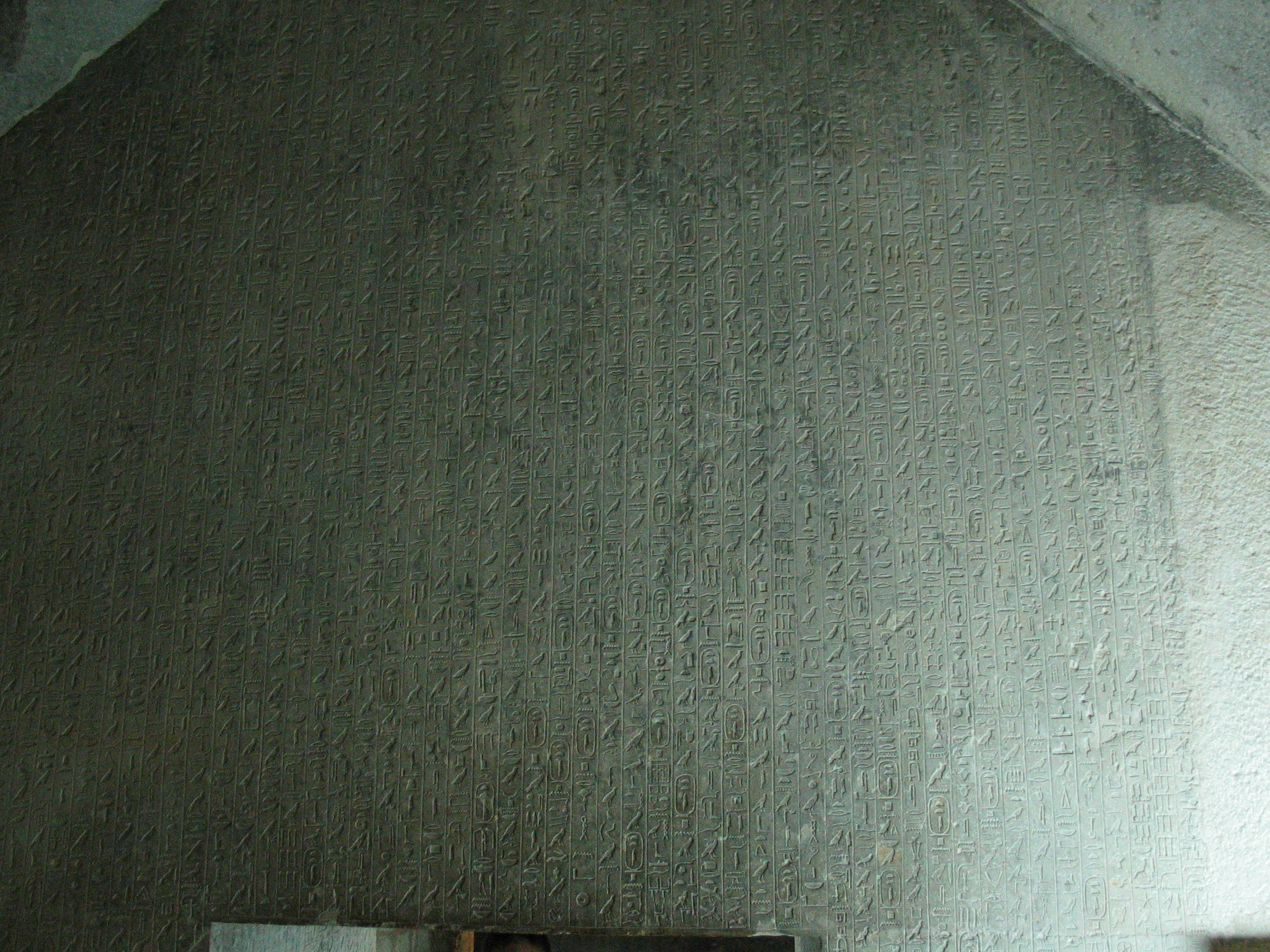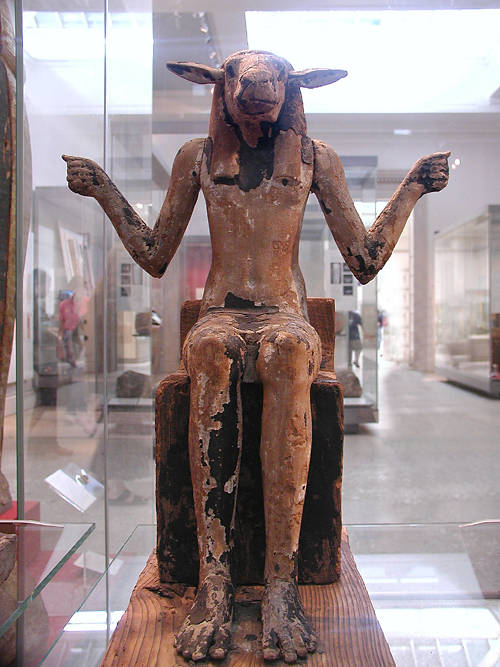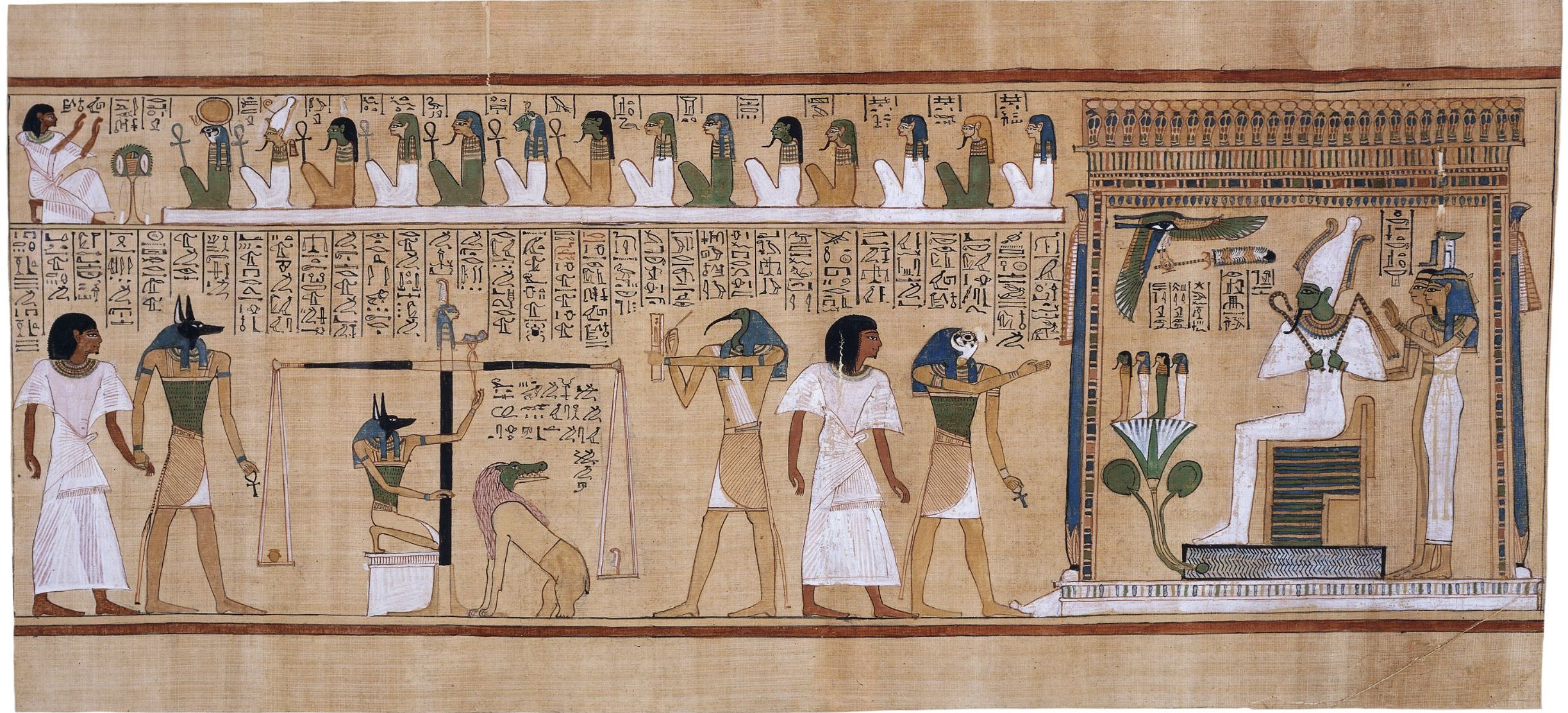|
Aaru
Aaru (; , ), or the Field of Reeds (, ''sekhet-aaru''), is the name for heavenly paradise in Egyptian mythology. Ruled over by Osiris, an Egyptian god, the location has been described as the of the Nile Delta. Ancient Egyptians believed that the soul resided in the heart, and that each individual would therefore undergo a " Weighing of the Heart" in the afterlife; each human heart is weighed on a giant scale against an ostrich feather, which represents the concept of the goddess Maat. All souls that successfully balance the scales will be allowed to start a long and perilous journey to Aaru, where they will exist in peace and pleasure for eternity. Conversely, hearts that are heavy with evil will tumble from the scale pan and fall into the crocodilian jaws of the goddess Ammit. Any souls that are subject to Ammit's "second death" are doomed to restlessness in the Duat.Qualifying souls undergo a long journey and face many perils before finally reaching Aaru. Once they arri ... [...More Info...] [...Related Items...] OR: [Wikipedia] [Google] [Baidu] |
Ancient Egyptian Afterlife Beliefs
Ancient Egyptian afterlife beliefs were centered around a variety of complex ritual A ritual is a repeated, structured sequence of actions or behaviors that alters the internal or external state of an individual, group, or environment, regardless of conscious understanding, emotional context, or symbolic meaning. Traditionally ...s that were influenced by many aspects of Egyptian culture. Ancient Egyptian religion, Religion was a major contributor, since it was an important social practice that bound all Egyptians together. For instance, many of the Egyptian gods played roles in guiding the souls of the dead through the afterlife. With the evolution of writing, religious ideals were recorded and quickly spread throughout the Egyptian community. The solidification and commencement of these doctrines were formed in the creation of afterlife texts which illustrated and explained what the dead would need to know in order to complete the journey safely. Egyptian religious doctrine ... [...More Info...] [...Related Items...] OR: [Wikipedia] [Google] [Baidu] |
Ammit
Ammit (; , "Devourer of the Dead"; also rendered Ammut or Ahemait) was an ancient Egyptian goddess with the forequarters of a lion, the hindquarters of a hippopotamus, and the head of a crocodile—the three largest "man-eating" animals known to ancient Egyptians. In ancient Egyptian religion, Ammit played an important role during the funerary ritual, the Judgment of the Dead. Nomenclature Ammit (; ) means "''devourer of the dead''" ("''devoureress of the dead''") or "''swallower of the dead''", where is the verb "to swallow", and signifies "the dead", more specifically the dead who had been adjudged not to belong to the ("blessed dead") who abided by the code of truth ( Ma'at). Iconography Ammit is denoted as a female entity, commonly depicted with the head of a crocodile, the forelegs and upper body of a lion (or leopard), and the hind legs and lower body of a hippopotamus. The combination of three deadly animals of the Nile: crocodile, lion, and hippopotamus, sugg ... [...More Info...] [...Related Items...] OR: [Wikipedia] [Google] [Baidu] |
Gate Deities Of The Underworld
The gate deities of the underworld were ancient Egyptian minor deities charged with guarding the gates of the Egyptian underworld.Hart 1986, pp. 68–72.Wilkinson 2003, pp. 81–2. Description and partition The Egyptians believed that in the netherworld, the Duat, there were various gates, doors and pylons crossed every night by the solar boat ( Atet) of the sun-god Ra and by the souls directed to the world of the dead. Ancient funerary texts provide many different descriptions of the afterlife gates. Sometimes more than 1,000 guardian deities are listed. According to a more general view, every gate was guarded by a minor god who allowed access only to the souls capable of pronouncing the secret name of the god himself, as a sort of "password". The walls of many Pharaonic tombs in the Valley of the Kings are decorated with the texts of the Book of Gates, which describes the twelve gates or pylons of the underworld: in spite of being imagined as architectural barriers to ... [...More Info...] [...Related Items...] OR: [Wikipedia] [Google] [Baidu] |
Duat
The Duat or Tuat (Ancient Egyptian: Hieroglyph: 𓇽 romanized: dwꜣt) is a concept in ancient Egyptian mythology involving death. It is most often seen as a realm where people go after they die. Due to linguistic shifts within Ancient Egypt, the ''Duat'' has also been called Te () and Amenthes (). What is known of the ''Duat'' derives principally from funerary texts such as the '' Book of Gates'', the ''Book of Caverns'', the '' Coffin Texts'', the '' Amduat'', and the ''Book of the Dead,'' among many other sources. It is generally known best as a dark subterranean realm that not only houses the deceased, but a variety of deities. Common deities depicted in these texts are Osiris, Anubis, Thoth, Horus, and Maat in various forms. While all of these documents involve the ''Duat'', each of them fulfilled a different purpose and depict the ''Duat'' in a variety of unique ways. Overview This realm is most often depicted as a setting for a variety of rituals and mythological e ... [...More Info...] [...Related Items...] OR: [Wikipedia] [Google] [Baidu] |
Maat
Maat or Maʽat ( Egyptian: ''mꜣꜥt'' /ˈmuʀʕat/, Coptic: ⲙⲉⲓ) comprised the ancient Egyptian concepts of truth, balance, order, harmony, law, morality, and justice. Maat was also the goddess who personified these concepts, and regulated the stars, seasons, and the actions of mortals and the deities who had brought order from chaos at the moment of creation. Her ideological opposite was Isfet (Egyptian '' jzft''), meaning injustice, chaos, violence or to do evil. Pronunciation Cuneiform texts indicate that the word ''m3ˤt'' was pronounced /múʔʕa/ during the New Kingdom of Egypt, having lost the feminine ending ''t''. Vowel assimilation of ''u'' to ''e'' later produced the Coptic word "truth, justice". History The earliest surviving records indicating that Maat is the norm for nature and society, in this world and the next, were recorded during the Old Kingdom of Egypt, the earliest substantial surviving examples being found in the Pyramid Texts of Unas ( and ... [...More Info...] [...Related Items...] OR: [Wikipedia] [Google] [Baidu] |
Asylum (Moon Knight)
"Asylum" is the fifth episode of the American television miniseries ''Moon Knight'', based on Marvel Comics featuring the character Moon Knight. It follows Marc Spector and Steven Grant as they try to make sense of their situation in a psychiatric hospital. The episode is set in the Marvel Cinematic Universe (MCU), sharing continuity with the films of the franchise. It was written by Rebecca Kirsch and Matthew Orton and directed by Mohamed Diab. Oscar Isaac stars as Marc Spector and Steven Grant, alongside May Calamawy, Ann Akinjirin, David Ganly, Fernanda Andrade, Antonia Salib, Karim El-Hakim, Rey Lucas, F. Murray Abraham, and Ethan Hawke. Diab joined the series by October 2020 to direct four episodes. Filming took place at Origo Studios in Budapest. "Asylum" was released on the streaming service Disney+ on April 27, 2022. Critics highlighted the episode for its plot twists, emotional weight, Isaac's performance, and its portrayal of Spector and Grant's dissociative id ... [...More Info...] [...Related Items...] OR: [Wikipedia] [Google] [Baidu] |
Osiris
Osiris (, from Egyptian ''wikt:wsjr, wsjr'') was the ancient Egyptian deities, god of fertility, agriculture, the Ancient Egyptian religion#Afterlife, afterlife, the dead, resurrection, life, and vegetation in ancient Egyptian religion. He was classically depicted as a green-skinned deity with a Pharaoh, pharaoh's beard, partially mummy-wrapped at the legs, wearing a distinctive atef crown and holding a symbolic crook and flail. He was one of the first to be associated with the mummy wrap. When his brother Set (deity), Set cut him to pieces after killing him, with her sister Nephthys, Osiris' sister-wife, Isis, searched Egypt to find each part of Osiris. She collected all but one – Osiris’s genitalia. She then wrapped his body up, enabling him to return to life. Osiris was widely worshipped until the decline of ancient Egyptian religion during the Christianization of the Roman Empire, rise of Christianity in the Roman Empire. Osiris was at times considered the eldest son of ... [...More Info...] [...Related Items...] OR: [Wikipedia] [Google] [Baidu] |
Ashihara No Nakatsukuni
is, in Japanese mythology, the world between Takamagahara (Heaven) and Yomi (Hell). It was created by the god Susanoo-no-Mikoto, after he was driven out of Takamagahara by the gods for his violent actions. In time, the term became another word for the country or the location of Japan. It is mentioned in both the ''Kojiki'' and the ''Nihon Shoki'' in the land-ceding myth about Ōnamuchi. The term can be used interchangeably with Toyoashihara no Nakatsukuni (豊葦原中国). There is a great dispute among historians about where exactly in Japan the term originally referred to. Perhaps the term was considered appropriate to describe Japan because the land was damp and covered with reeds (葦) in ancient times. The meaning of 中 (middle) in the word 中つ国 is based upon the world view of ancient peoples, where 中つ国 indicates the real world or country between Takamagahara in the heavens and Yomi no kuni in the netherworld. See also * Aaru * Midgard * Upper World (Gree ... [...More Info...] [...Related Items...] OR: [Wikipedia] [Google] [Baidu] |
Elysium
Elysium (), otherwise known as the Elysian Fields (, ''Ēlýsion pedíon''), Elysian Plains or Elysian Realm, is a conception of the afterlife that developed over time and was maintained by some Greek religious and philosophical sects and cults. It was initially separated from the Greek underworld – the realm of Hades. Only mortals related to the gods and other heroes could be admitted past the river Styx. Later, the conception of who could enter was expanded to include those chosen by the gods, the righteous, and the heroic. They would remain at the Elysian Fields after death, to live a blessed and happy afterlife, and indulge in whatever they had enjoyed in life. The Elysian Fields were, according to Homer, located on the western edge of the Earth by the stream of Oceanus. In the time of the Greek poet Hesiod, Elysium would also be known as the " Fortunate Isles", or the "Isles (or Islands) of the Blessed", located in the western ocean at the end of the earth. The Isl ... [...More Info...] [...Related Items...] OR: [Wikipedia] [Google] [Baidu] |
Valhalla
In Norse mythology, Valhalla ( , ; , )Orchard (1997:171–172) is described as a majestic hall located in Asgard and presided over by the god Odin. There were five possible realms the soul could travel to after death. The first was Fólkvangr, ruled by the goddess Freyja. The second was Hel, ruled by Hel, Loki's daughter. The third was that of the goddess Rán. The fourth was the Burial Mound where the dead could live. The fifth and last realm was Valhalla, ruled by Odin and was called the Hall of Heroes. The masses of those killed in combat (known as the einherjar), along with various legendary Germanic heroes and kings, live in Valhalla until Ragnarök, when they will march out of its many doors to fight in aid of Odin against the jötnar. Valhalla was idealized in Viking culture and gave the Scandinavians a widespread cultural belief that there is nothing more glorious than death in battle. The belief in a Viking paradise and eternal life in Valhalla with Odin may hav ... [...More Info...] [...Related Items...] OR: [Wikipedia] [Google] [Baidu] |
Thoth
Thoth (from , borrowed from , , the reflex of "[he] is like the ibis") is an ancient Egyptian deity. In art, he was often depicted as a man with the head of an African sacred ibis, ibis or a baboon, animals sacred to him. His feminine counterpart was Seshat, and his wife was Maat. He was the god of the Moon, wisdom, knowledge, writing, hieroglyphs, science, magic, art and judgment. Thoth's chief Egyptian temple, temple was located in the city of Hermopolis ( , Egyptological pronunciation: Khemenu, ). Later known as in Egyptian Arabic, the Temple of Thoth was mostly destroyed before the beginning of the Christian era. Its very large pronaos was still standing in 1826, but was demolished and used as fill for the foundation of a sugar factory by the mid-19th century. Thoth played many vital and prominent roles in Egyptian mythology, such as maintaining the universe, and being one of the two deities (the other being Maat, Ma'at) who stood on either side of Ra, Ra's solar barq ... [...More Info...] [...Related Items...] OR: [Wikipedia] [Google] [Baidu] |






